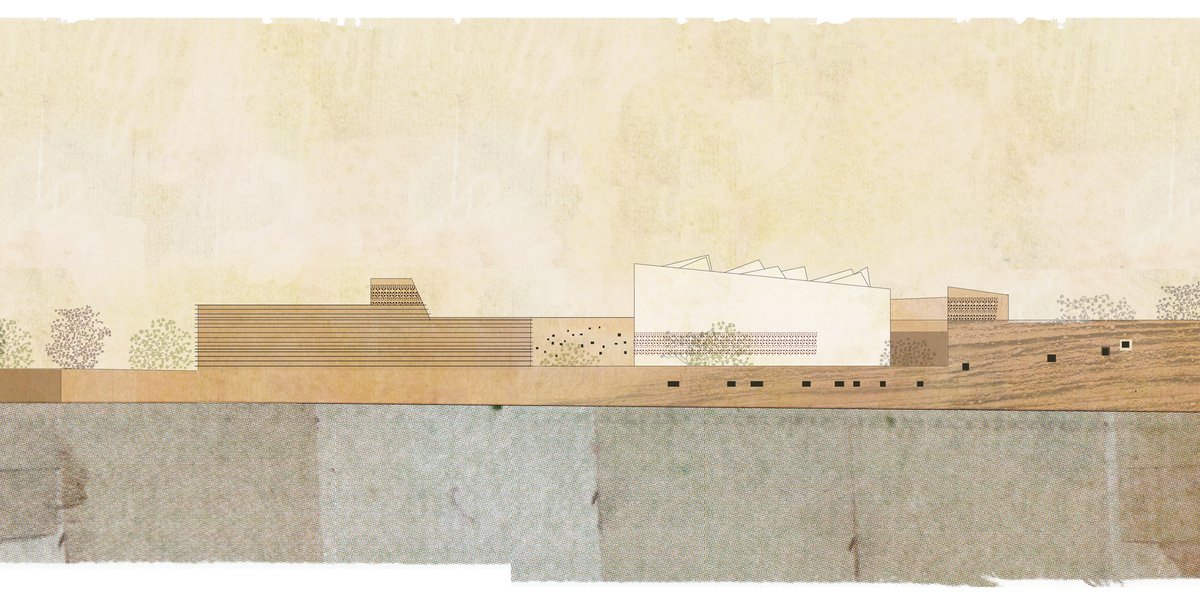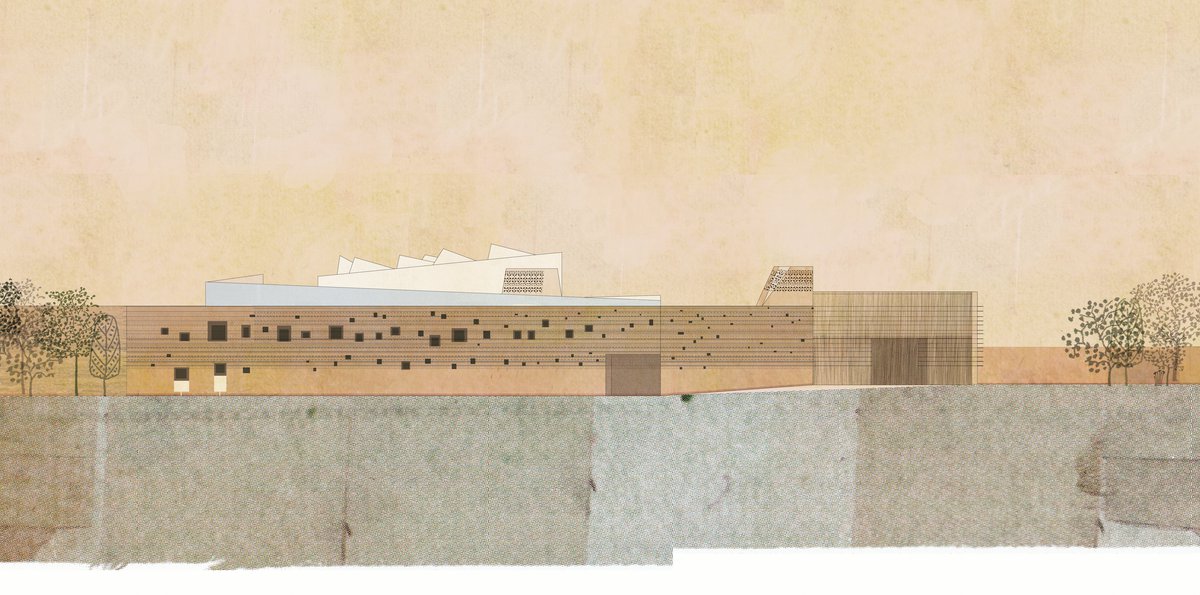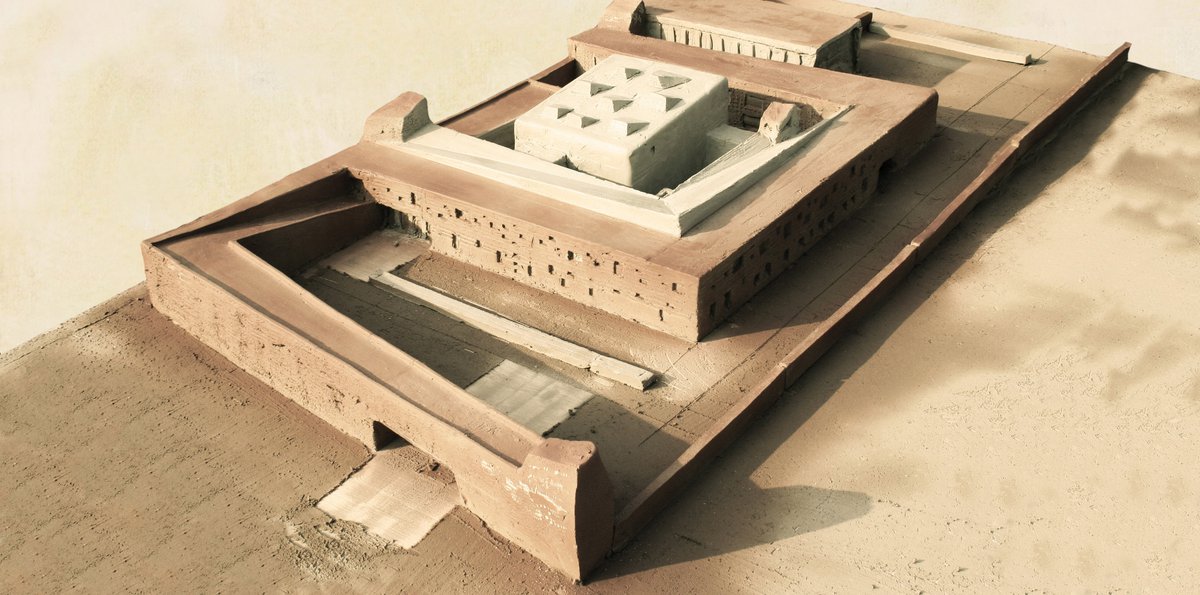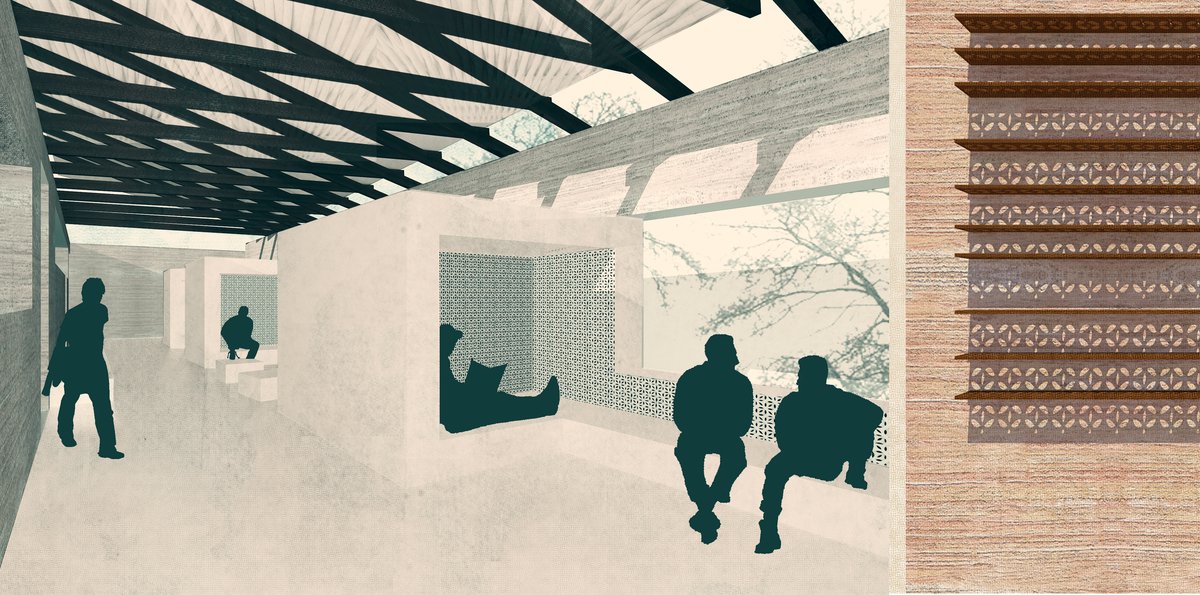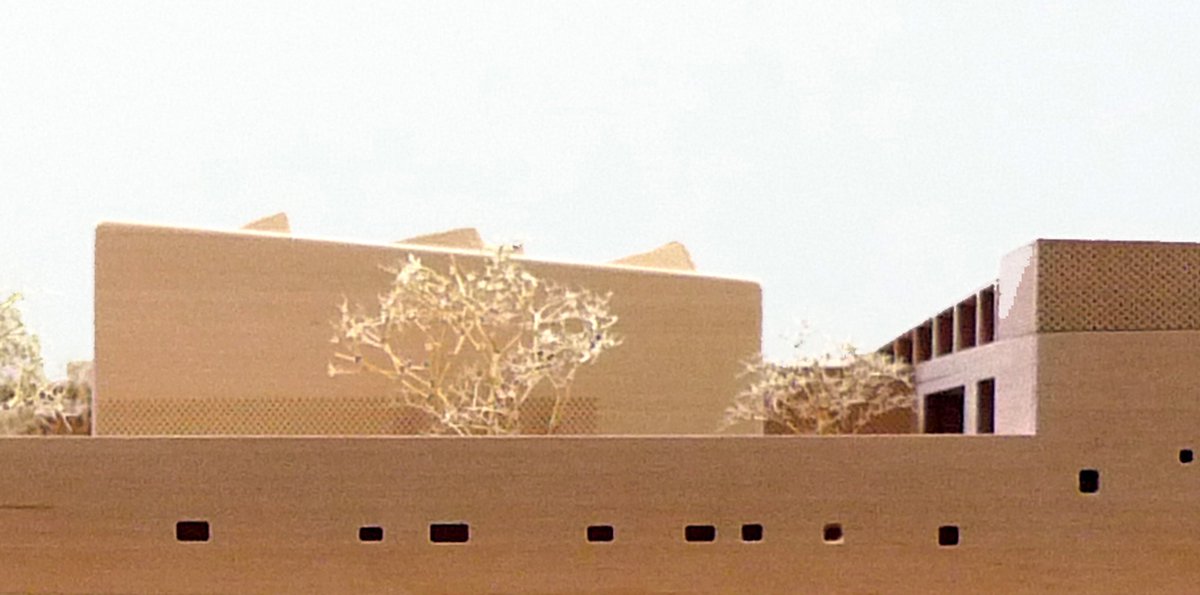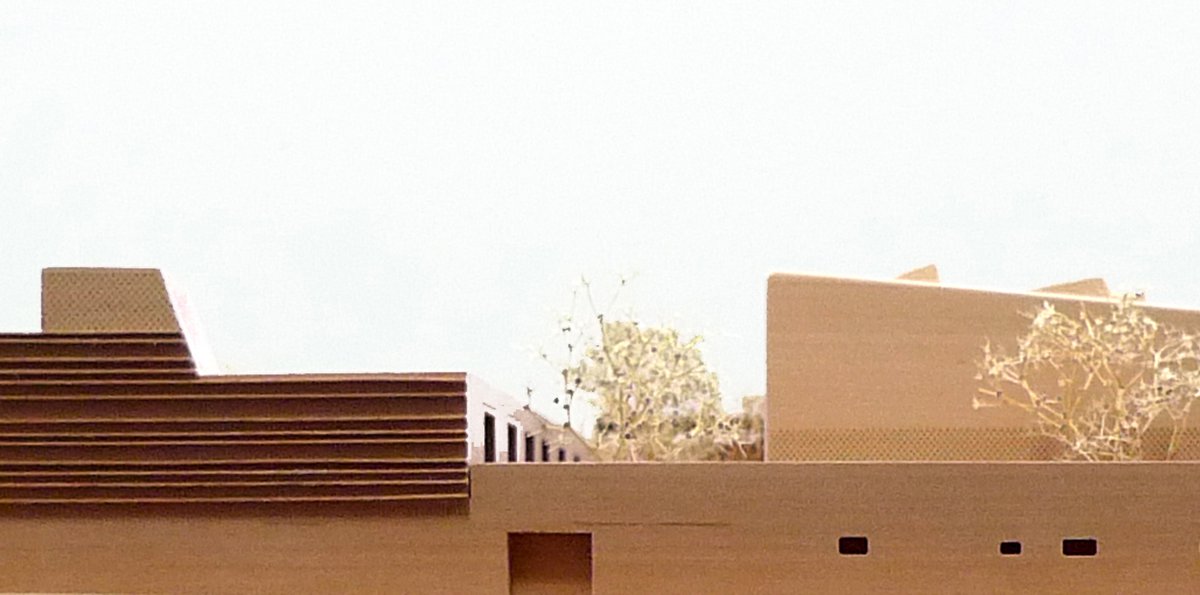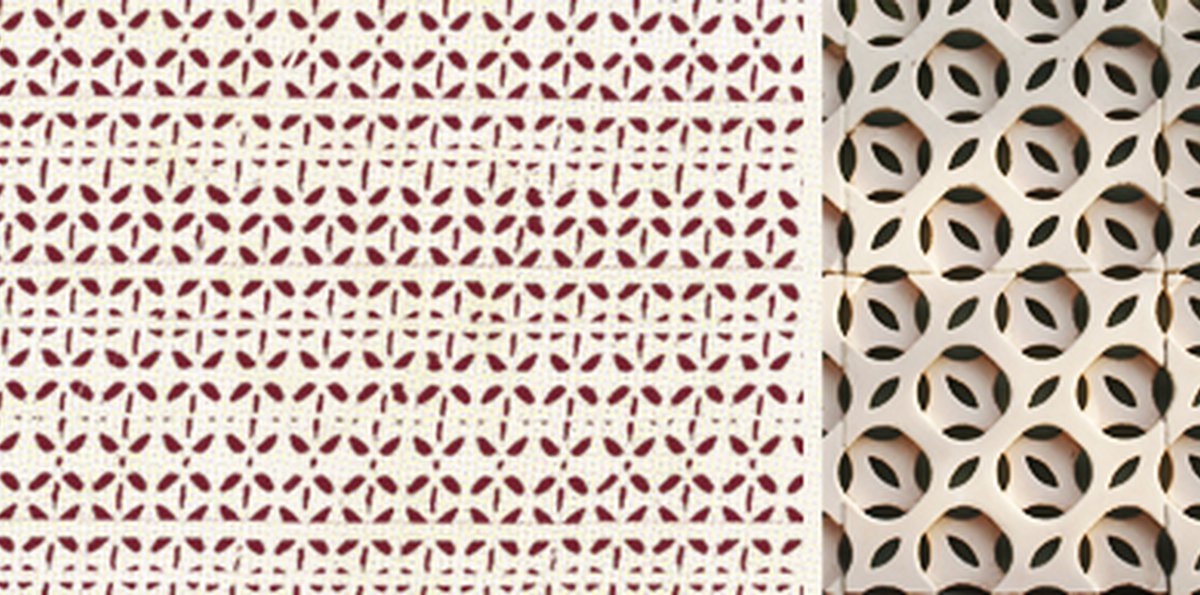Training Centre for Sustainability, Morocco
The aim of this project is the transformation of natural, immediate available resources on the lowest possible level of entropy, with maximum benefit for the local population, into a beautiful architecture with a strong local identity. The purpose of the building is a teaching centre for sustainable construction. 30% of the youth in Morocco at the age of 15 to 25 are analphabets. Vocational training is essential for avoiding unemployment. The construction sector in Morocco is prospering, but there is a lack of models for sustainable construction that are appropriate in technology as well as sensitive to the cultural identity and the ressources of the context. The Training Centre for Sustainability in Chwitter offers the youth from the suburb of Marrakech a possiblity to learn a future orientated profession.
Analysing the local context we found that one major traditional building material for any kind of purpose and size, earth, is nowadays only used for fencing-walls and housing in poor, mainly rural areas. There is a lack of improved building technology to re-invent earth as adequate building material for modern structures. In this project we adopt traditional know-how supplemented with appropriate modern technologies in order to meet the needs in safety (including earthquakes) and comfort of the present society. Our focus is on a global strategy for sustainability, not on sophisticated technical solutions that can be used by a minority of the world`s population. We want to promote a high level of sustainability based on an intelligent use of natural building resources grafted with modern technologies and passive design mechanisms, which motivates through a strong, modern architecture.
All structures of this project are formed out of earth with a diversity of techniques: simply replicable building techniques as well as modes of prefabrication, that are important for a mainstream building industry in both, industrialized and developing countries. Morocco is a country of great culture in architecture and craftsmanship. The design of the project wants to use and celebrate this traditional knowledge in order to keep this treasure of cultural know-how and of social value added.
The masterplan shows a balance between indoor and outdoor areas. The diversity of public spaces ensures a large spectrum of atmospheres. The area is entered through a massive earth wall that embarrasses a spacious garden. The building opens up for patios,surrounded with intimate niches for contemplation or communicative exchange. There are outside areas for practical working and a bio food garden where the students would grow vegetables.
For us there is no contradiction between tradition and modernity, poetry and function, economics and ecology and sustainability and beauty.
Context and aesthetic concept The design is inspired from two Moroccan archetypes: the rural ksar, as the compact place of community life and the urban medersa devoted to the training of students. A dynamic architectural sculpture that surrenders patios and gardens, that plays with sun and shades, with static massiveness and rhythmics, with rough surfaces and refined shining renderings. It shows a new language for an old material, that is deeply routed in the culture while meeting the needs and dreams of the present society.
Social aspects The project area is lacking public meeting places. The centre offers a variety of places: a spacious garden, an exhibition hall, a cafe, a library and an auditorium that can be used also for the public. Visitors will experience the atmospheric, aesthetic and technological quality of the constructions and natural cooling systems. Since earth construction is labour intensive, many laborers from the surrounding, including woman who traditionally work with mud, will be involved in the construction.
Ecological concept
Economic performance The earth walls can be built out of the excavation material, which is a free by-product on site. With the choice of a labour intensive building material and regional handicraft products [ceramics, tadelakt, waving], a major part of the profit remains with the people. The project is of high positive influence for the small local economy. Maintenance is minimized through a design that allows the aging process of the natural materials' surfaces. Repairing work is easy with local craftsmen.
The progress The construction process will be a training for local people. The use of the main material earth is planned in different techniques and scales of technology: traditional hand ramming with improved shuttering for the fencing wall, prefabricated rammed earth elements, which include the technical support for tempering the offices and classrooms, and a concrete load bearing structure filled with precast straw-earth blocs, with a plastering of tadelakt for the auditorium. The necessary shading of the walls will be done with a transformed traditional element of earthen structures: horizontal layers of locally produced ceramic tiles [used as protection against water erosion] with an graphical perforation added, will protect the wall from direct sunlight with an agile ornament of constantly changing shadows - a poetic counterpart to the static, raw earth walls. Based on local building materials and a reasonable synthesis of low- and high-tech, the building's strategy is replicable anywhere.
Client: Fondation Allience, Alami Lazraq Location: Chwitter/ Marrakech, Morocco Design: Anna Heringer, Martin Rauch, Elmar Naegele, Ernst Waibel with Salima Naji Consultants: Thomas Steinmann, Switzerland (landscape architecture), Merz Kley + Partner, Austria (structural engineering), Christoph Muss, Austria (building physics, energy concept), Jean Dethier, France (cultural advisor), teamgmi, Austria ( fluids and thermics), Hecht Elektroplanung, Austria (electrical concept) Effective surface: 6300 m2 Estimated costs: 6 Mio Euro

